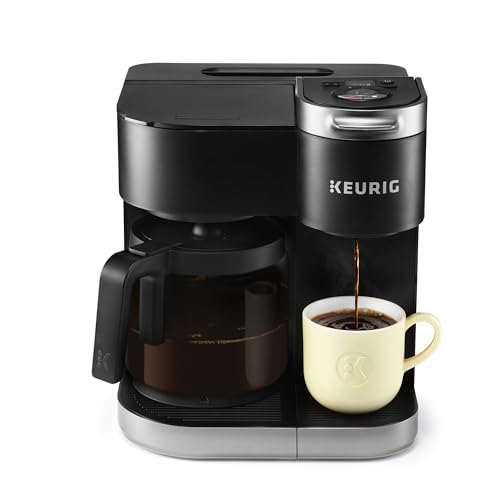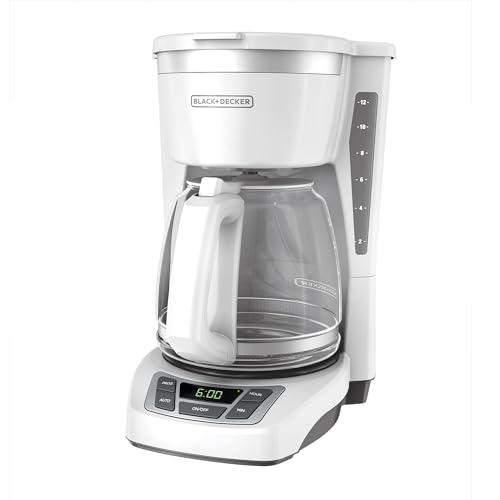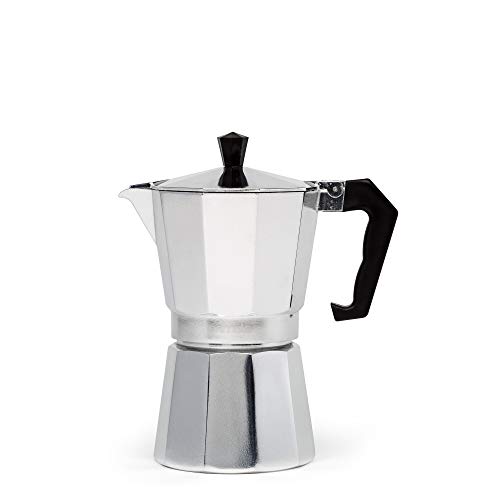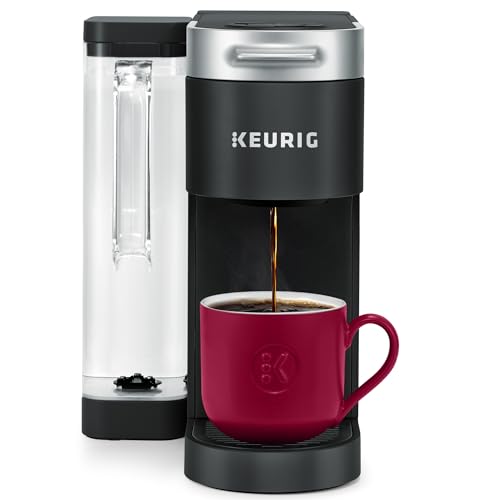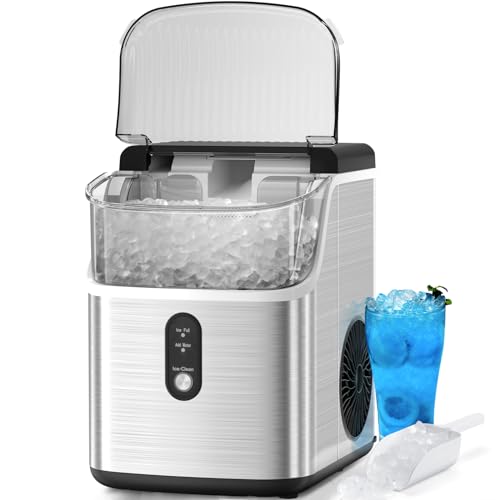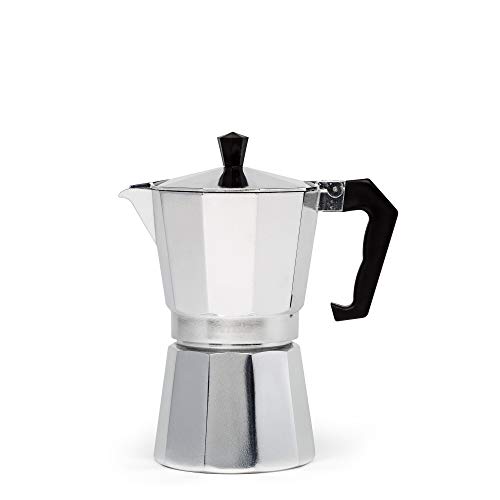- How to Juice a Carrot Without a Juicer? – The Main Section
- Some Tips When Choosing Carrots
- Some Tips When Storing Carrot
- The Benefits of Juicing Carrots for Health
- Juicing Carrots Can Increase Your Intake of Vitamins and Minerals
- Juicing Carrots Can Help Improve Your Eyesight
- Juicing Carrots Can Boost Your Immune System
- Juicing Carrots Can Help Lower Cholesterol Levels
- Juicing Carrots Can Aid in Weight Loss
- Juicing Carrots Can Help Improve Your Skin Health
- Juicing Carrots Can Increase Your Intake of Fiber
- Juicing Carrots Can Provide a Natural Energy Boost
- How Many Carrots Should You Consume a Day?
- The Delicious Dishes From Carrot (Juice)
- FAQs for “How to Juice a Carrot Without a Juicer?”
- Conclusion
How to Juice a Carrot Without a Juicer?
Welcome to the article “How to Juice a Carrot Without a Juicer?” by Phoenix Landing Bar. Read on for more useful information!
Giving up processed foods and eating more natural, whole foods is a great way to improve your overall health. However, if you’re not used to eating whole fruits and vegetables, it can be difficult to know how to prepare them. One method that many people are unsure of is juicing. Juicing is a great way to get all the nutrients from fruits and vegetables without chewing them.
Carrot is a versatile root vegetable that you can use in various dishes. Carrots can be cooked, roasted, or pureed and added to soups or stews. Carrots can also be shredded and used as a topping on salads or as a healthy snack.
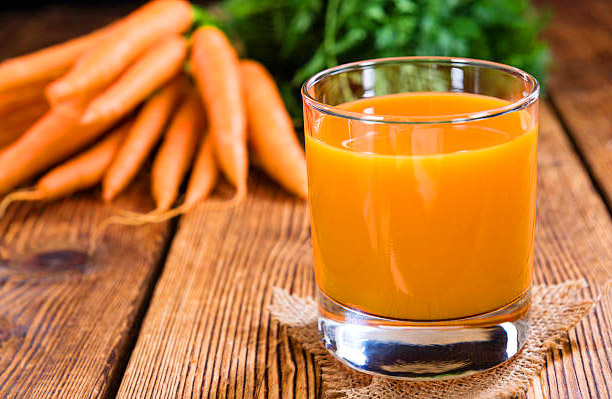
Carrots are an excellent source of Vitamin A and beta-carotene. They are also a good source of dietary fiber, vitamins C and K, and potassium. In addition, carrots are low in calories and fat, making them a healthy addition to any diet. Carrots have so many nutrients, so it’s often consumed in many forms, including juice. This blog post will show you how to juice a carrot without a juicer. Enjoy!
How to Juice a Carrot Without a Juicer? – The Main Section
Just apply the following few simple steps. Then, you can make many cups of delicious fresh carrot juice without any juicer.
This can be done by using a blender or food processor. When juicing without a juicer, adding water to the blender or food processor is important. This will help to create a smoother juice. Here are the steps:
1. Wash and peel the carrots- The first step is to wash and peel the carrots. Be sure to remove all of the dirt and debris from the carrots before juicing them.
2. Cut the carrots into small pieces- The next step is to cut the carrots into small pieces. This will help them blend or process better.
3. Add water to the blender or food processor- Before adding the carrots, add water to the blender or food processor. Add enough water so that the carrots are covered. This will help to create a smoother juice.
4. Blend or process the carrots until smooth- The next step is to blend or process the carrots until they are smooth. Be sure to scrape down the sides of the blender or food processor periodically to ensure all the carrots are blended or processed.
5. Strain out the carrot pulp, and take out the water- Once the carrots are completely blended or processed, strain the carrot pulp. To do this, you can use a fine mesh strainer or cheesecloth. Once the pulp is strained, remove the water used to blend or process the carrots.
6. Pour the juice into a glass and enjoy- Once the carrots have been blended or processed, pour the juice into a glass and enjoy.
7. Enjoy your delicious carrot juice!- The final step is to enjoy your delicious carrot juice! Carrot juice is a great way to get all the nutrients from carrots without eating them. It is also a refreshing and healthy drink. Try adding some ice cubes or ginger for an extra boost of flavor. Enjoy!
Juicing carrots without a juicer is a great way to get all the nutrients from carrots without buying a juicer. These tips will help juice carrots without a juicer and create delicious, healthy juices. Now that you know how to juice carrots without a juicer, put these tips to use and start enjoying carrot juice today!
An important tip to getting delicious carrot juice is to choose the right carrots. I will write more about this part below, so please watch it!
Did you know?
The word “carrot” is derived from the Old French word carotte, which originally meant “turnip”. The modern French word for carrot, carotte, retains this meaning. The English word carrot has been used since the 15th century and was adapted from the Old French word carotte. It is believed to have been first used in 1484 by William Turner, a botanist and herbalist who wrote one of the first English books on plants. The word “carrot” likely originated as a corruption of the Latin carota, which itself is derived from the Greek karotonos (καροτόνος), meaning “little horn” or “little dog”, a reference to the shape of the root.
The Oxford English Dictionary traces the first use of the word in English to 1699, in John Evelyn’s Acetaria: A Discourse of Sallets. Evelyn noted that “Carrots were then called By some, ‘Cartoota'”. The word “carrot” was first used in print in England in 1532, in a work by the botanist Nicolas Culpeper. The word “carrot” has been used in English since the 15th century, and was adapted from Old French carotte. It is believed to have been first used by William Turner, a botanist and herbalist who wrote one of the first English books on plants. The etymological roots of the word “carrot” are uncertain, but it is thought to be derived from the Latin carota or the Greek karotonos.
The first recorded use of the word “carrot” in English was in 1699, in John Evelyn’s Acetaria: A Discourse of Sallets. Evelyn noted that “Carrots were then called By some, ‘Cartoota'”. The word “carrot” was first used in print in England in 1532, in a work by the botanist Nicolas Culpeper. The word “carrot” has been used in English since the 15th century, and was adapted from Old French carotte. It is believed to have been first used by William Turner, a botanist and herbalist who wrote one of the first English books on plants. The etymological roots of the word “carrot” are uncertain, but it is thought to be derived from the Latin carota or the Greek karotonos.
Some Tips When Choosing Carrots
Once you know how to “How to Juice a Carrot Without a Juicer?”. You also need to know how to choose a quality carrot.
1. Go for the organic ones- This is the best tip I can give you when choosing carrots. Organic carrots are free from pesticides and other harmful chemicals. They are also usually fresher and tastier than non-organic carrots.
2. Look for bright, vibrant colors- Carrots come in various colors, but the most common ones are orange and yellow. When choosing carrots, look for those that have bright, vibrant colors. Avoid those that look dull or faded.
3. Choose firm, crisp carrots- Another important tip when choosing carrots is to select those that are firm and crisp. Avoid those that are limp or mushy.

4. Avoid those with greens still attached- When choosing carrots, avoid those that have greens still attached. These carrots are usually older and not as fresh.
5. Choose the right size- Carrots come in various sizes. When juicing, it is best to choose medium or large carrots. Smaller carrots tend to be more fibrous, making your juice less smooth.
Now that you know how to choose the right carrots let’s move on to the next tip!
Some Tips When Storing Carrot
The next tip is an important one when it comes to juicing carrots without a juicer. This tip is all about proper storage. Carrots are best when fresh, so it is important to store them properly to maintain their freshness. Here are a few storage tips:
1. Store carrots in the refrigerator- One of the best ways to store carrots is in the refrigerator. Carrots can last up to 2 weeks when stored properly in the fridge.
2. Store carrots in a plastic bag- Another way to store carrots is in a plastic bag. When storing carrots in a plastic bag, make sure to remove as much air from the bag as possible. This will help to keep the carrots fresher for longer.
3. Don’tDon’t wash the carrots until you are ready to use them- It is best not to wash them until you are ready. Washing them too early can cause them to spoil faster.
4. Cut off the greens before storing them- If you plan on storing the carrots for more than a few days, it is best to cut off the greens before storing them. The greens can cause the carrots to spoil faster.
5. Store carrots in a cool, dry place- You should store carrots in a cool, dry place. Avoid storing them in humid or wet areas as this can cause them to spoil faster.
Now that you know how to store carrots properly let’s move on to the last stage. (The funny truth is the last stage is in the first section).
If you wanna juice a pineapple without a juicer, read more.
The Benefits of Juicing Carrots for Health
If you want to know “How to Juice a Carrot Without a Juicer?” then you probably want to drink carrot juice too. So let’s find out what benefits it has! Carrots are an excellent source of vitamins A, C, and K. They also contain fiber, potassium, and manganese. Carrots are a low-calorie food that is high in nutrients. Carrots are a healthy addition to any diet. They can be eaten raw, cooked, or juiced. Carrots can also be used in soups, salads, and other recipes.
Carrots have so many nutrients it is sure to have many health benefits. Here we will take a look at the benefits that carrots bring us.
Juicing Carrots Can Increase Your Intake of Vitamins and Minerals
Carrots contain a range of essential vitamins and minerals for good health. Vitamin A, for example, is important for vision, while potassium helps to maintain healthy blood pressure. While you can get these nutrients from eating carrots whole, juicing them can help increase your intake.
One of the main advantages of juicing carrots is that it makes it easier for your body to absorb the nutrients. When you eat whole carrots, some of the nutrients are lost in digestion. Juicing allows your body to get more vitamins and minerals from each carrot.
In addition, juicing carrots can help increase your intake of carotenoids. These pigments give carrots their characteristic orange color and have powerful antioxidant properties. Antioxidants help protect your cells from damage and may reduce your risk of chronic diseases like heart disease and cancer.
If you’re looking for a convenient way to increase your intake of vitamins and minerals, juicing carrots is an excellent option. Not only does it make it easier for your body to absorb the nutrients, but it also provides a delicious way to enjoy this healthy vegetable. Add carrot juice to your favorite smoothie or drink it on its own for a refreshing treat.
Juicing Carrots Can Help Improve Your Eyesight
Carrots are rich in beta carotene, an antioxidant that the body converts into vitamin A. Vitamin A is essential for good vision and has been shown to help protect against age-related macular degeneration, a leading cause of blindness. In one study, people who ate foods high in beta carotene were 35% less likely to develop macular degeneration than those who ate less. Juicing carrots is an easy way to increase your intake of this important nutrient.
In addition to being rich in beta carotene, carrots are a good source of lutein and zeaxanthin, two other antioxidants that play an important role in maintaining healthy eyesight. Lutein and zeaxanthin help to filter out harmful blue light and protect the eyes from damage. They have also been shown to reduce the risk of cataracts.
So, if you’re looking for a way to improve your eyesight, consider adding carrots to your juicing routine. Carrots are easy to juice, and they taste great, too!
Juicing Carrots Can Boost Your Immune System
Carrots are an excellent source of beta-carotene, which the body converts into vitamin A. Vitamin A is important for maintaining a healthy immune system. It helps to protect the mucous membranes in the respiratory and gastrointestinal tracts, which act as a barrier against infection. Vitamin A also helps to increase the production of white blood cells, which fight infection.
Now, you’re reading “How to Juice a Carrot Without a Juicer?” of Phoenix Landing Bar.
Beta-carotene is also a powerful antioxidant, which can help protect cells from damage. Oxidative stress is thought to play a role in developing chronic diseases like heart disease and cancer. Antioxidants may help reduce the risk of these conditions by mopping harmful toxins before they can cause damage.
Carrots are also a good source of fiber. Fiber is important for keeping the digestive system healthy and preventing constipation. It can also help to reduce cholesterol levels and keep blood sugar levels under control.
Including carrots in your diet is a great way to boost your intake of vitamins, minerals, antioxidants, and fiber. Juicing carrots is an easy and convenient way to do this. Carrot juice is also a good source of potassium, which is important for maintaining healthy blood pressure levels.
Try juicing carrots if you’re looking for a nutrient-packed juice that will give your immune system a boost. You’llYou’ll get all the benefits of eating carrots without having to eat as many!
Juicing Carrots Can Help Lower Cholesterol Levels
Carrots are often thought of as helping lower cholesterol levels, which is true to some extent. Carrots contain a type of soluble fiber known as pectin, which can help to bind together and remove cholesterol from the body. Additionally, carrots are a good source of antioxidants like beta-carotene, which can help lower cholesterol levels. Juicing carrots is a great way to get all of these benefits in an easily digestible form. Try adding carrots to your juice recipes or drinking carrot juice on its own for a delicious and healthy way to lower your cholesterol levels.
Juicing Carrots Can Aid in Weight Loss
Carrots are not only a delicious and nutritious addition to your diet, but they may also help promote weight loss. This is because carrots are low in calories and high in fiber, which helps keep you feeling full. Fiber also aids in digestion and can help prevent constipation. Additionally, carrots are rich in vitamins and minerals, including Vitamin A, linked to increased fat burning.
One of the reasons that carrots may help with weight loss is because they contain a compound called falcarinol. Falcarinol is a natural pesticide that protects carrots from fungal infections. In addition, studies have shown that falcarinol can decrease the size of fat cells and reduce the amount of fat stored in the body. This suggests that eating carrots may help reduce the fat your body stores and promote weight loss.
Another reason that carrots may help with weight loss is because they contain high antioxidants. Antioxidants help to protect cells from damage and may reduce the risk of some chronic diseases.
There are still many good things in the article “How to Juice a Carrot Without a Juicer?”. Continue reading!
Juicing Carrots Can Help Improve Your Skin Health
Carrots are an excellent source of carotenoids, including beta-carotene. These nutrients are important for maintaining healthy skin. Beta-carotene is a powerful antioxidant that can help protect the skin from damage caused by UV radiation and other environmental stressors. Juicing carrots can help improve your skin health by providing your body with a concentrated source of these important nutrients. Carrot juice also contains vitamin C, another essential nutrient for healthy skin. Vitamin C helps to promote collagen production and helps to keep the skin looking youthful and radiant. In addition, carrot juice contains potassium, which can help to keep the skin hydrated and prevent dryness. Drinking carrot juice regularly can help you achieve and maintain clear, healthy skin.
If you want to improve your skin health, try adding carrot juice to your diet. You can enjoy carrot juice on its own or mix it with other juices, such as apple or grapefruit juice, for a delicious and nutritious beverage. Juicing carrots is a simple and convenient way to boost your intake of important nutrients for healthy skin. Try incorporating carrot juice into your daily routine and see how it can affect your skin health.
Juicing Carrots Can Increase Your Intake of Fiber
Carrots are an excellent source of fiber. In addition to promoting regularity, fiber may also reduce the risk of heart disease and other chronic conditions like obesity and type II diabetes. Fiber is found in both the pulp and the juice of carrots, so juicing is a great way to increase your intake. Carrots are also a good source of beta-carotene, converted into vitamin A in the body and linked to a reduced risk of cancer and other degenerative diseases. The nutrients in carrots make them a worthwhile addition to any diet, but especially if you’re looking to boost your fiber intake.
Juicing Carrots Can Provide a Natural Energy Boost
Carrots are an excellent source of Vitamin A, beta-carotene, fiber, potassium, and other nutrients. They are often juiced for their health benefits. Carrot juice can help to improve vision, boost the immune system, and protect against cancer. It can also help to increase energy levels and improve digestion.

One of the main reasons that carrot juice is so good for energy levels is that it is packed with nutrients essential for the body to function properly. For example, carrots are a good source of B vitamins, which are necessary for converting food into energy. In addition, carrots contain high levels of iron, which is needed for carrying oxygen around the body.
Another reason that carrot juice can provide a natural energy boost is that it can help to improve digestion. This is because carrots’ fiber can help keep the digestive system running smoothly. In addition, the beta-carotene in carrots can help to protect the lining of the stomach and intestines from damage.
Carrot juice is worth considering if you are looking for a natural way to increase your energy levels. However, it is important to remember that you should always consult with your doctor before starting any new juicing regimen. This is especially important if you have any medical conditions or are taking medications.
How Many Carrots Should You Consume a Day?
You already know “How to Juice a Carrot Without a Juicer”. So do you know how many glasses to drink a day? There is no one-size-fits-all answer to this question, as the number of carrots you consume daily will depend on several factors, including your age, health, and activity level. However, most health experts recommend that adults consume at least 1-2 cups of carrot juice daily. This is equivalent to approximately 2-4 large carrots. Depending on age and activity level, children and adolescents may need less carrot juice. If you are unsure how many carrots you should consume daily, speak to your doctor or a registered dietitian for more guidance.
You may experience orange skin, nausea, and vomiting if you consume too many carrots. Carotene is a type of pigment found in plants that gives them their orange color. When this pigment is consumed in large quantities, it can build up in the body and cause carotenemia. This condition is typically not harmful and will resolve itself once the individual reduces their carrot intake. However, in rare cases, carotenemia can lead to more serious health problems such as liver damage. If you think you may be consuming too many carrots, you must speak with a healthcare professional to ensure your health is not at risk.
The Delicious Dishes From Carrot (Juice)
Carrot juice is not only healthy, but it can also be used to make some delicious dishes. Here are some of the most popular recipes that use carrot juice:
Carrot Cake
A carrot cake is a cake that contains carrots in the batter. It is usually moist and dense and often has cream cheese frosting. Carrot cake is often considered a type of spice cake. It originated in Europe and was brought to the United States by German and Dutch immigrants during the 19th century.
There are many variations of carrot cake, but the most common ingredients include carrots, sugar, oil, eggs, flour, baking powder, cinnamon, and nutmeg. Some recipes also include raisins, pineapple, nuts, or coconuts. The cake can be either baked or steamed.
Carrot cake is typically served as a dessert or snack cake. It can be served with ice cream, whipped cream, or frosting. Carrot cake is also a popular choice for birthday and wedding cakes.
There are many variations of carrot cake, but the most common ingredients include carrots, sugar, oil, eggs, flour, baking powder, cinnamon, and nutmeg. Some recipes also include raisins, pineapple, nuts, or coconuts. The cake can be either baked or steamed.
Carrot Soup
Carrot soup is a type of soup made with carrots as the primary ingredient. It is often mixed with other vegetables, such as celery, onion, and potato. Carrot soup can be either vegetarian or non-vegetarian, depending on the ingredients used. It is usually served hot but can also be served cold. Carrot soup is a popular dish in many parts of the world and can be easily made at home.
Now, you’re reading “How to Juice a Carrot Without a Juicer?” of Phoenix Landing Bar.
There are many different recipes for carrot soup, but the most basic version typically includes carrots, potatoes, celery, onion, water or stock, and salt and pepper to taste. Other common ingredients include butter, cream, herbs, and spices. Some recipes also call for adding sweeteners, such as honey or sugar. Carrot soup can also be made using different carrots, such as baby carrots, shredded carrots, or chopped carrots.
Carrot soup is healthy and nutritious, low in calories and fat. It is also a good source of vitamins and minerals, including Vitamin A, potassium, and fiber. Carrot soup can be enjoyed as a starter or main course and served with bread or crackers on the side.
Carrot Salad
A Carrot Salad is a salad that contains carrots as one of its key ingredients. Carrots are a vegetable often used in salads because of their crunchy texture and sweet flavor. Other common ingredients in a Carrot Salad include lettuce, tomatoes, cucumbers, and onions. In addition, many people add dressing to their Carrot Salad, anything from a simple vinaigrette to a more complex ranch dressing.
Carrots are an excellent source of Vitamin A, which is important for maintaining healthy vision and skin. They are also a good source of fiber, which can help to regulate digestion. In addition, tomatoes, cucumbers, and onions all contain antioxidants, which can help to protect the body against disease.
A Carrot Salad is a healthy and delicious way to get your daily dose of vegetables. It is also a great option for those looking for a low-calorie or low-fat salad.
Carrot-Raisin Bread
Carrot-raisin bread is a quick bread made with carrots, raisins, and other ingredients such as nuts or spices. It is typically moist and sweet and may be either leavened or unleavened. Carrot-raisin bread is popular in the United States, Canada, and the United Kingdom.
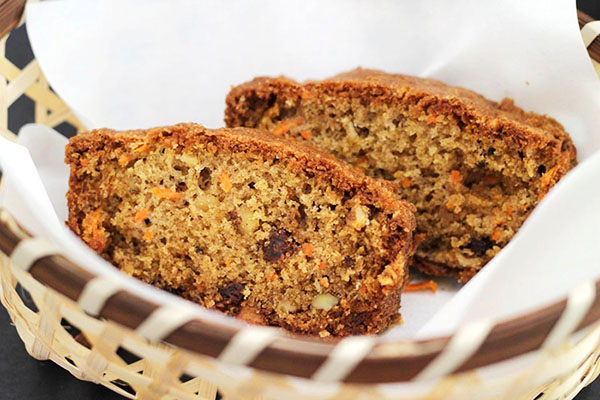
Carrots are a common ingredient in quick bread and cakes. They add sweetness, moisture, and nutrition. Raisins are often used in carrot-raisin bread to add sweetness and texture. Other ingredients such as nuts or spices may be added to the bread for flavor or texture.
Carrot-raisin bread can be enjoyed fresh or toasted. It makes a great snack or breakfast bread. We can also use it in recipes such as bread pudding or as a base for savory dishes such as Stuffing.
Carrot-Spice Cookies
Carrot-Spice Cooky is a type of cookie made with carrot and spice flavorings. It is a popular cookie in the United States and Canada. Carrot-Spice Cooky is often served during the holiday season, particularly around Christmas.
Carrot-Spice Cooky is made with flour, sugar, eggs, butter, spices, and carrots. The dough is usually formed into balls or cookie shapes and then baked. In addition, carrot-Spice Cooky is often decorated with icing or frosting, nuts, and dried fruit.
Carrot-Spice cooky has a long history in North America. The first recipe for Carrot-Spice Cookie appeared in an American cookbook in 1856. The cookie became popular in the early 1900s. Carrot-Spice Cookie was introduced to Canada in the 1920s.
Carrot-Spice Cooky is a traditional holiday cookie in the United States and Canada. It is often served at Christmas time but can be enjoyed any time of year. Carrot-Spice Cooky is a delicious treat that is perfect for any occasion.
FAQs for “How to Juice a Carrot Without a Juicer?”
1. What are the benefits of juicing carrots?
The benefits of juicing carrots include:
- Providing a concentrated source of important nutrients for healthy skin.
- Increasing your fiber intake.
- Boosting your energy levels.
Carrot juice is also a good way to get more vitamins and minerals into your diet.
2. How do I make carrot juice?
To make carrot juice, simply blend peeled and chopped carrots with water in a blender until smooth. You can also add other juices, such as apple or grapefruit juice, to create a delicious and nutritious beverage.
3. Can I drink too much carrot juice?
It is possible to drink too much carrot juice. This can lead to an increase in beta-carotene levels, which can cause a yellowing of the skin. Talk to your doctor or a registered dietitian if you are concerned about drinking too much carrot juice.
4. How often should I drink carrot juice?
There is no definitive answer to how often you should drink carrot juice. However, incorporating it into your daily routine is a good way to ensure you get the nutrients your body needs for healthy skin and increased energy levels.
5. Is carrot juice good for weight loss?
Carrot juice may help with weight loss due to its high fiber content. Fiber helps promote satiety and may also reduce the calories absorbed from other foods. However, carrot juice should not be the only source of nutrition in a weight loss diet.
6. Is carrot juice good for people with diabetes?
Carrot juice can be a part of a healthy diet for diabetics. The fiber in carrots can help regulate blood sugar levels, and carrots have a low glycemic index. However, people with diabetes should always consult their doctor before starting any new juicing or diet regimen.
Now, you’re reading “How to Juice a Carrot Without a Juicer?” of Phoenix Landing Bar.
7. Can I give my baby carrot juice?
Yes, you can give your baby carrot juice. Carrots are an excellent first food for babies due to their high nutrient content and smooth texture. Start with small amounts of carrot juice and increase as tolerated.
8. Is it better to juice or eat carrots?
There are benefits to both juicing and eating carrots. Juicing provides a concentrated source of nutrients, while eating carrots whole provides fiber and other health benefits. Ultimately, the best way to consume carrots is in a way that fits into your overall healthy diet.
9. Do I need to peel carrots before juicing them?
No, you do not need to peel carrots before juicing them. However, you may want to wash them thoroughly to remove any dirt or debris. If you choose to peel the carrots, use a vegetable peeler rather than a paring knife so you don’t remove too much of the nutritious carrot flesh.
10. What are some other benefits of carrots?
In addition to the benefits mentioned above, carrots have also been shown to improve vision, reduce the risk of certain cancers, and improve heart health. Furthermore, carrots are versatile and nutrient-rich vegetables that can be enjoyed in many different ways.
Conclusion
Juicing is a great way to get your daily dose of fruits and vegetables, but if you don’t have a juicer, it can be tough to juice without one. In this article, you’ve got the answer to the question “How To Juice a Carrot Without a Juicer?“. We hope this post will help you get your daily dose of fruits and vegetables, whether you have a juicer or not. Come to PhoenixLandingBar for more cool things. Thanks for reading!
